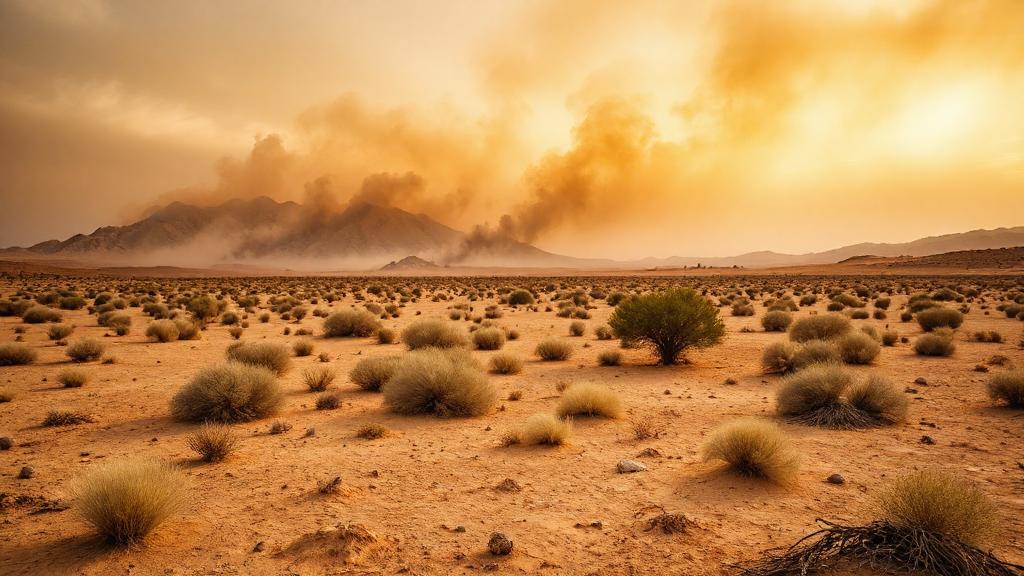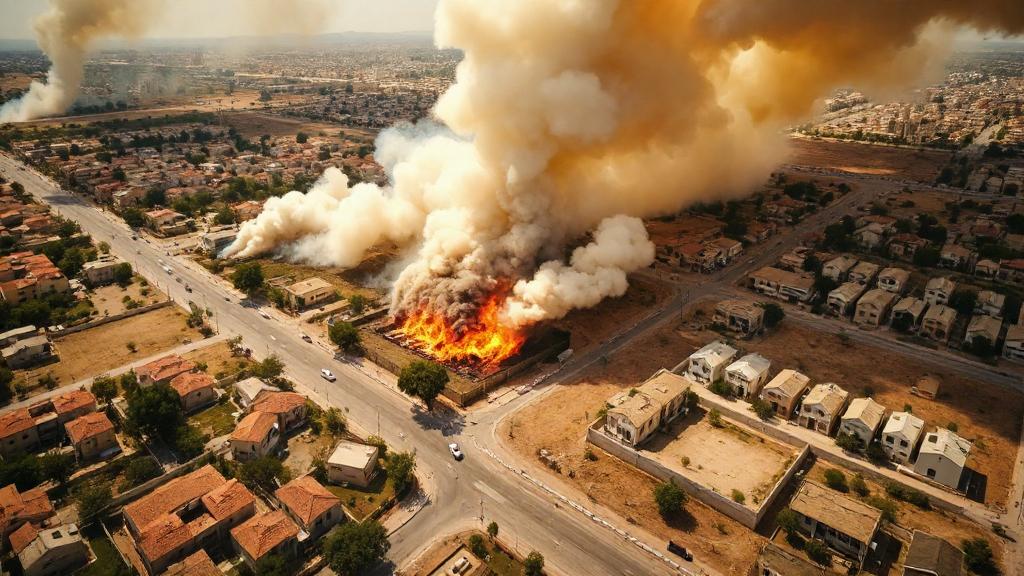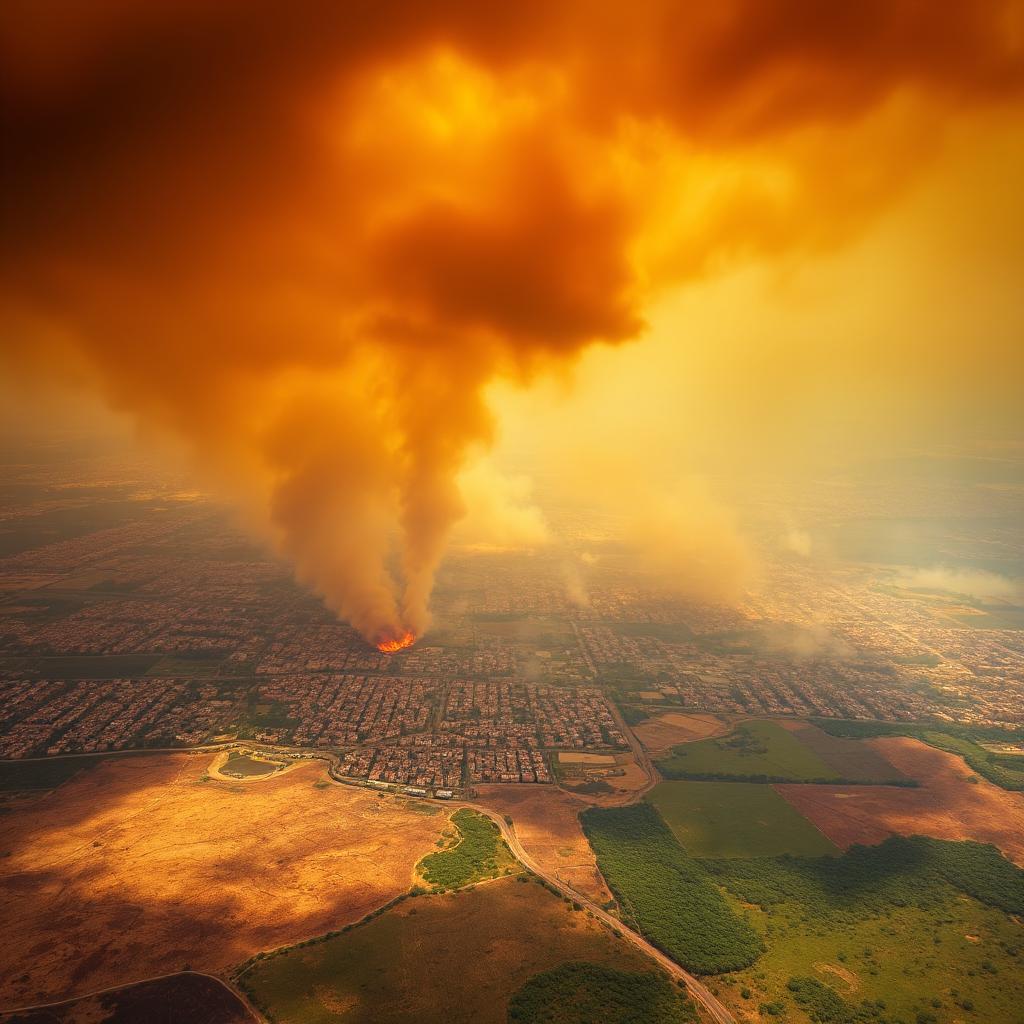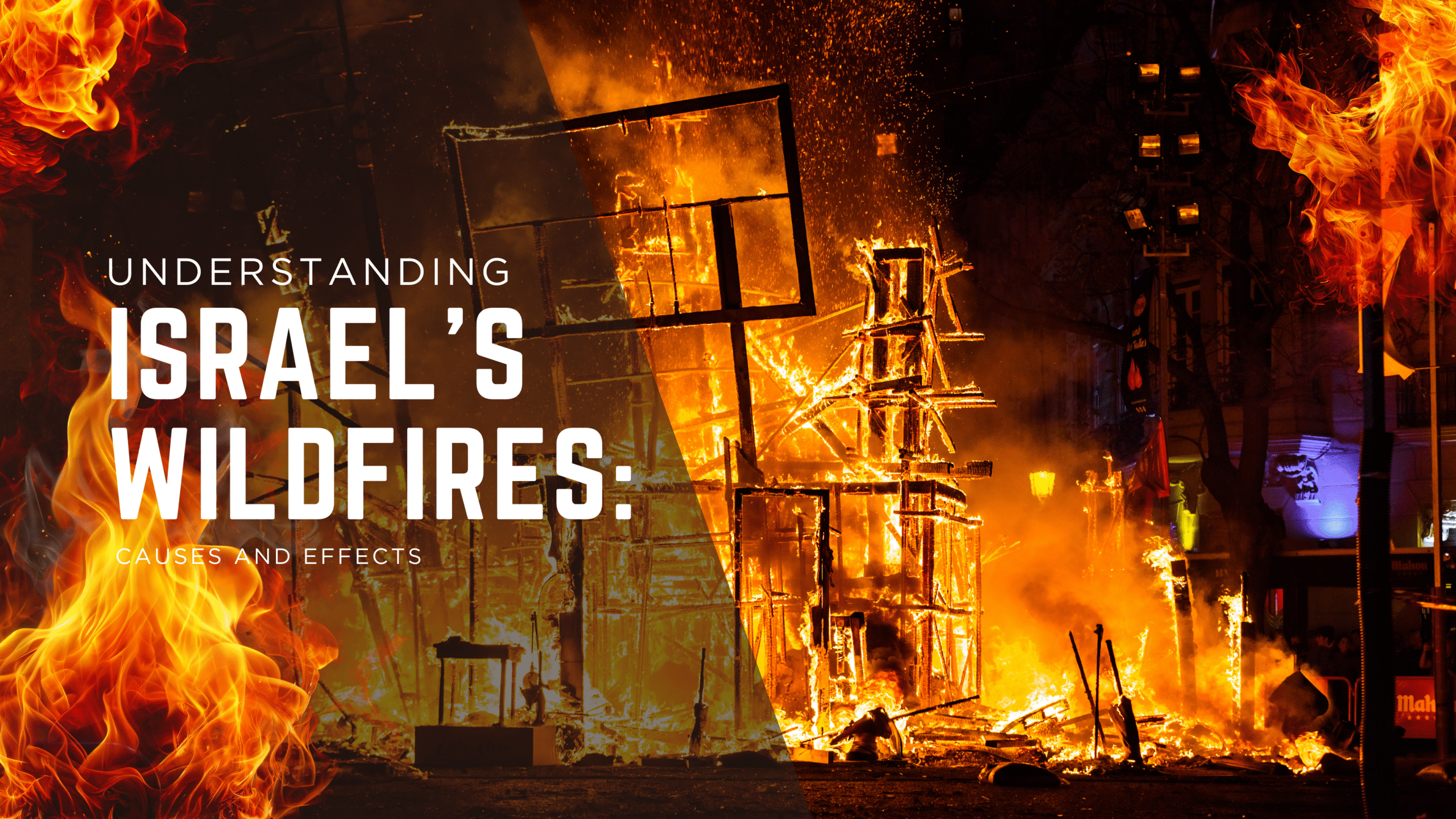I. Introduction
A. Overview of Wildfires in Israel
Wildfires are uncontrolled fires that burn in forests, grasslands, or other ecosystems. They can start naturally, but many fires result from human actions. In Israel, wildfires are an all-too-frequent occurrence, leading to significant ecological, economic, and social consequences. Historically, Israel has seen a notable rise in wildfire incidents, particularly during the dry summer months.
Understanding the causes and dynamics of wildfires is crucial not just for the sake of safety, but also for comprehending their broader environmental implications. As these fires become more frequent, it’s vital to grasp their effects and foster a conversation around prevention.
B. Purpose of the Article
This article aims to directly explore the causes and effects of wildfires in Israel. By delving into the contributing environmental factors, human activities, and the resulting consequences, we can highlight the implications of these wildfires on various levels.
C. Significance of the Topic
The impact of wildfires extends far beyond the immediate destruction they cause. They affect local ecosystems, can severely disrupt economies, and even impact social structures within affected communities. As discussions around climate change escalate, the relationship between wildfires and shifting weather patterns becomes increasingly relevant. Understanding these connections is essential for addressing the challenges we face regarding wildfires.
II. Environmental Factors Contributing to Wildfires
A. Climate Conditions

Israel’s climate plays a significant role in the wildfire risks faced each year. The Mediterranean climate brings hot, dry summers, creating ideal conditions for fires to ignite and spread.
- Seasonal Weather Patterns: The dry spell during summer often leads to an increased fire risk as vegetation becomes tinder-dry.
- Drought Conditions: Prolonged periods of drought result in lower moisture content in plant life, increasing flammability.
- Temperature Fluctuations: Higher-than-average temperatures can intensify fires, making them burn hotter and faster.
B. Vegetation Types
The types of plants found in Israel also contribute to the wildfire risks.
- Overview of Fire-Prone Ecosystems: Areas with dense shrubland, or “macchia,” are particularly susceptible to igniting.
- Plant Species: Certain species, like the pines and eucalyptus trees, are more flammable due to their resinous and oil-rich characteristics.
- Regional Variations: Different regions have varying vegetation types, each influencing fire dynamics differently, from the coastal areas to the mountainous regions.
C. Geographic and Topographical Influences
The landscape in Israel complicates wildfire behavior even further.
- Landscape Features: The combination of hills and valleys can create conditions that allow fires to spread rapidly.
- Elevation and Terrain: Steeper terrains can lead to faster-moving fires, making it challenging for firefighters to control them.
- Urban Proximity: Urban areas near natural vegetation can experience higher risks, as embers can jump from natural to built environments.
III. Human Activities as Catalysts
A. Land Use and Management Practices
Human practices play a crucial role in influencing wildfire risks.
- Agricultural Practices: Some agricultural methods can lead to increased fire hazards, especially if crop residues are not handled properly.
- Urban Development: Expanding urban areas into wildfire-prone regions raises the stakes for potential fire occurrences.
- Forest Management Policies: The lack of proper forest management can leave landscapes vulnerable to unchecked fires.
B. Ignition Sources
Understanding how wildfires ignite is essential for prevention strategies.

- Human-Caused Ignitions: A significant number of wildfires stem from human activities, ranging from campfires to discarded cigarettes.
- Negligence and Accidents: Many fires are accidental, caused by negligence in managing outdoor flames or equipment.
- Deliberate Ignition: Unfortunately, arson also plays a role, with some fires intentionally set to clear land or out of malicious intent.
C. Climate Change and Human Impact
The connection between human actions and climate change further complicates the situation.
- Global Warming Effects: As temperatures rise globally, we see corresponding increases in fire frequency and intensity.
- Local Climate Relationships: Human-related emissions directly affect local climates, making regions more susceptible to wildfires.
- Long-Term Consequences: Without a shift in practices, the effectiveness of current fire management strategies may decline in the face of more frequent fires.
IV. Consequences of Wildfires
A. Environmental Destruction
The aftermath of wildfires can be devastating for the environment.
- Biodiversity Impact: Fires can destroy habitats, leading to shifts in local wildlife populations and loss of biodiversity.
- Soil Degradation: Soil can suffer long-lasting effects from fires, losing nutrients and increasing vulnerability to erosion.
- Air Quality Issues: Smoke and pollutants from fires can significantly compromise air quality, impacting both human health and ecosystems.
B. Economic Costs
The financial implications of wildfires are profound.
- Local Economies: The cost of damage to property and infrastructure can run into millions, straining local economies.
- Agriculture and Tourism: Fires can ravage farms and deter tourists, leading to substantial losses in these vital sectors.
- Government Spending: Firefighting efforts and recovery efforts demand significant government resources, impacting overall budgets.
C. Social and Health Implications
The social fabric of communities can also be deeply affected.
- Community Displacement: Wildfires can force entire communities to evacuate, leading to temporary or permanent displacement.
- Health Risks: Smoke inhalation poses serious health risks, exacerbating respiratory problems and affecting vulnerable populations.
- Psychological Impact: The emotional toll on affected individuals can be immense, leading to stress, anxiety, and long-term mental health issues.
V. Strategies for Mitigation and Response
A. Fire Prevention Measures

Preventing wildfires requires a community effort.
- Education Programs: Encouraging community awareness can help reduce accidental ignitions and improve preparedness.
- Landscaping Regulations: Implementing guidelines for landscaping around homes can reduce fire risks.
- Controlled Burns: Utilizing controlled burns can reduce fuel loads in fire-prone areas, minimizing wildfire risks.
B. Emergency Response Framework
Having a solid emergency response strategy is paramount.
- Firefighting Resources: Israel has invested in firefighting capabilities, including equipment and training for firefighters.
- Agency Coordination: Collaboration between various agencies enhances the efficiency of wildfire response efforts.
- Community Involvement: Engaging local communities in preparedness can build resilience and quicken response times.
C. Future Directions and Innovations
Looking ahead, innovative strategies are essential.
- Advancements in Technology: Ongoing research into firefighting technology can lead to more effective methods for managing and preventing wildfires.
- Understanding Fire Dynamics: Research helps us better understand how fires behave, which can inform better land management practices.
- Sustainable Policies: Implementing policies that prioritize sustainability in land use can help address the root causes of wildfire risks.
VI. Conclusion
Wildfires in Israel are a complex issue with significant environmental, economic, and social implications. By understanding the causes and effects of these fires, we can take proactive steps toward prevention and response. It’s crucial that we continue to engage in research and develop informed policies to safeguard our communities and ecosystems from the increasing threat of wildfires.
VII. Frequently Asked Questions (FAQs)
A. What are the primary causes of wildfires in Israel?
The primary causes include natural factors like climate conditions and human activities such as agriculture, urban development, and negligence with ignition sources.
B. How do wildfires affect the environment and biodiversity?
Wildfires can lead to habitat destruction, loss of plant and animal species, soil degradation, and air quality issues.
C. What measures can be taken to prevent wildfires in the future?
Preventative measures include community education, proper landscaping practices, regulated land use, and controlled burns to manage fire risks.
D. How does climate change influence the frequency of wildfires?
Climate change exacerbates conditions such as drought and heat, leading to an increased frequency and intensity of wildfires.
E. What resources are available for communities affected by wildfires?
Communities can access firefighting resources, recovery funding, and support programs focused on rebuilding and mental health assistance following wildfires.

Leave a Reply